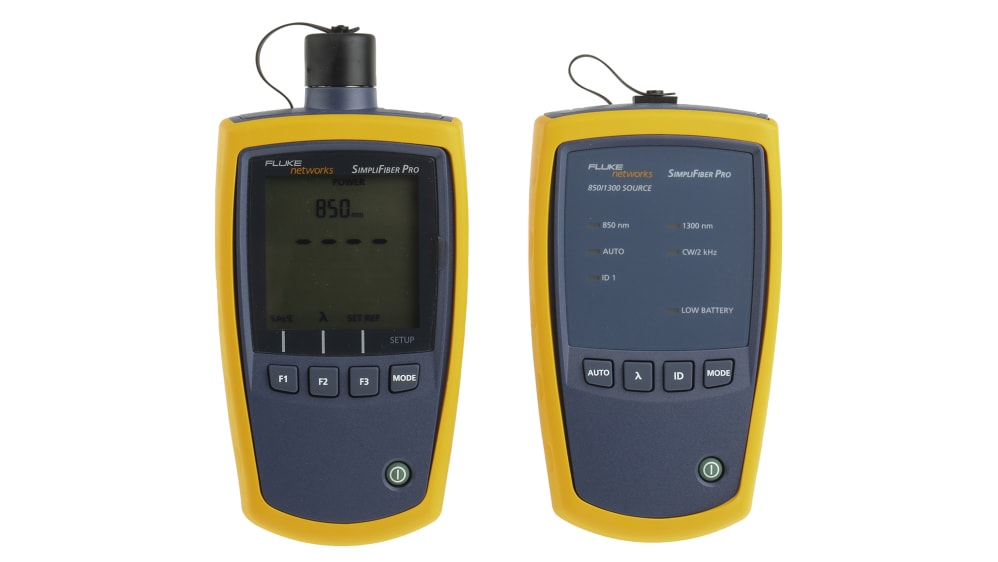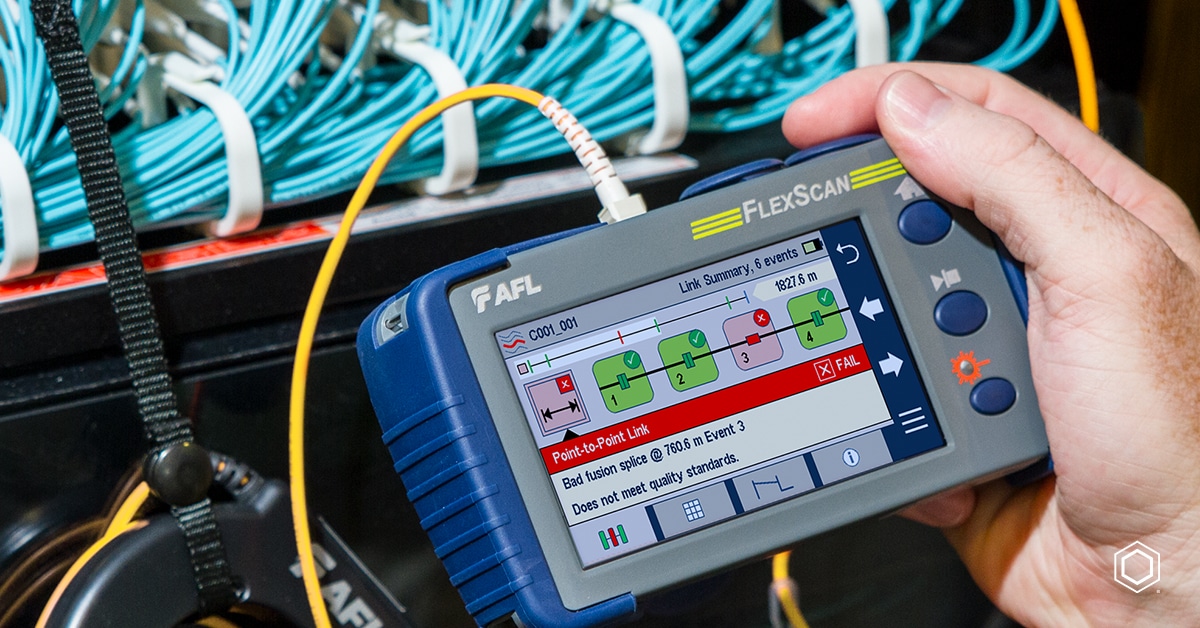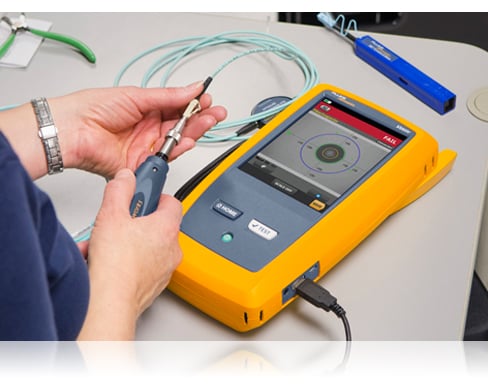Innovative robotic vision systems enhance automation and precision.
Innovative robotic vision systems enhance automation and precision.
Blog Article
Revealing the Key Use Optical Fibre Examining for Efficient Data Transmission
In the realm of contemporary interaction, optical fiber screening arises as an essential practice for optimizing information transmission. By utilizing methods such as Optical Time Domain Reflectometry (OTDR) and insertion loss evaluations, network drivers can properly determine and attend to problems that may endanger signal integrity. As the need for faster and a lot more reliable links proceeds to rise, the implications of these testing techniques expand beyond immediate mistake discovery, influencing long-term network efficiency. Recognizing the complex applications of optical fiber testing welcomes a deeper exploration right into its critical role in shaping the future of data communication.

Importance of Optical Fibre Testing
The importance of optical fiber testing can not be overstated, as it works as an important component in guaranteeing the integrity and performance of information transmission systems. In a period where high-speed interaction is critical, any deficiencies in fibre optics can cause substantial information loss and minimized performance. Rigorous screening procedures are necessary to validate the honesty and efficiency of optical cable televisions.
Evaluating enables the recognition of problems such as micro-bends, macrobends, and splice losses that could prevent signal high quality. Moreover, it offers insights right into the general attenuation and data transfer abilities of the fibre, making sure that the network satisfies particular functional requirements. Routine testing not only improves system performance but additionally lengthens the life-span of the facilities by determining possible concerns prior to they escalate right into expensive failures.

Kinds Of Optical Fibre Tests
Numerous kinds of optical fiber tests are carried out to make certain the performance and dependability of fiber optic networks. These tests can be categorized right into several vital kinds, each offering a details purpose in assessing the stability of the fiber.
First, Optical Time Domain Name Reflectometry (OTDR) is a famous examination that determines mistakes, interlaces, and connectors within the fibre. By sending pulses of light and assessing the reflected signals, service technicians can identify issues along the fibre's length.
Second, insertion loss examinations review the quantity of signal loss when light passes with adapters or splices, which is crucial for keeping network efficiency.
Third, return loss examinations measure the amount of light reflected back towards the resource, providing understandings into the top quality of links and potential resources of disturbance.
Additionally, connection examinations make sure that the fiber path is full, permitting technicians to validate that the fiber is undamaged without any breaks. robotic vision.
Last but not least, visual fault locators utilize noticeable light to recognize breaks or severe bends in the fibre, helping in quick troubleshooting. Jointly, these tests form a thorough approach to maintaining ideal performance in fibre optic networks.

Applications in Network Maintenance
In contemporary telecoms, effective network maintenance depends heavily on optical fibre testing to determine and correct problems promptly. Routine screening guarantees that the network operates at optimum efficiency levels, lowering downtime and improving customer experience.
Among the primary applications of optical fibre screening in upkeep is the detection of faults, such as breaks, flexes, or incorrect links. Methods like Optical Time Domain Name Reflectometry (OTDR) allow technicians to situate these problems precisely and evaluate the top quality of the fiber link. In addition, loss screening verifies the honesty of the optical path, ensuring that signal attenuation continues to be within acceptable limits.
Routine maintenance testing likewise assists in preventive measures, recognizing prospective troubles before they intensify into significant failures. This aggressive technique can conserve organizations both time and funds. Throughout learn the facts here now upgrades or growths, optical fibre screening makes sure that brand-new installments incorporate flawlessly with existing infrastructure.
Enhancing Data Transmission Integrity
Efficient network upkeep via optical fibre testing not only addresses immediate concerns but also plays a significant function in enhancing information transmission dependability. By recognizing faults, investigate this site measuring signal loss, and examining the overall problem of fibre optic cables, screening ensures that possible issues are fixed prior to they rise into significant interruptions.
Regular optical fibre screening, such as time-domain reflectometry (TDR) and optical time-domain reflectometry (OTDR), allows service technicians to identify the specific areas of breaks, flexes, or adapter concerns within the network. This aggressive strategy not only decreases downtime but likewise enhances the performance of data transmission by ensuring that the paths for signals are clear and working efficiently.
Moreover, screening help in validating adherence to industry requirements and requirements, which is essential for preserving the integrity of information flow. By guaranteeing that each link meets required limits for loss and top quality, companies can strengthen their self-confidence in the integrity of their information networks.
Eventually, buying extensive optical fiber testing not just improves data transmission dependability but likewise supports the long-lasting operational efficiency of interaction frameworks.
Future Trends in Fibre Testing
Emerging innovations are poised to revolutionize fibre testing, leading the way for enhanced efficiency and accuracy in information transmission diagnostics (ofda). As the demand for faster web he said and higher bandwidth remains to rise, the assimilation of sophisticated tools such as expert system (AI) and artificial intelligence (ML) is readied to transform conventional fibre screening methods. These technologies will enable anticipating upkeep and automated mistake discovery, significantly reducing downtime and improving network dependability
In addition, the fostering of Net of Points (IoT) gadgets will certainly assist in real-time monitoring of fiber networks, enabling for immediate identification of efficiency concerns. This shift towards aggressive management will minimize disturbances and enhance data flow.
Furthermore, innovations in optical time-domain reflectometry (OTDR) and new testing standards will certainly enhance the precision of measurements, ensuring that data integrity is preserved throughout the transmission process. The introduction of 5G modern technology also requires the advancement of more innovative fibre testing techniques to sustain its high-speed requirements.
Final Thought
To conclude, optical fibre testing is vital for keeping efficient information transmission within interaction networks. By utilizing various testing techniques, such as OTDR and insertion loss tests, prospective mistakes can be recognized and rectified, consequently improving signal clarity and reducing downtime. Regular testing not only makes certain compliance with market criteria yet also assists in positive upkeep, eventually adding to the long-term dependability and performance of fiber optic systems. The ongoing evolution of screening methods will additionally strengthen these capacities in the future.
Report this page